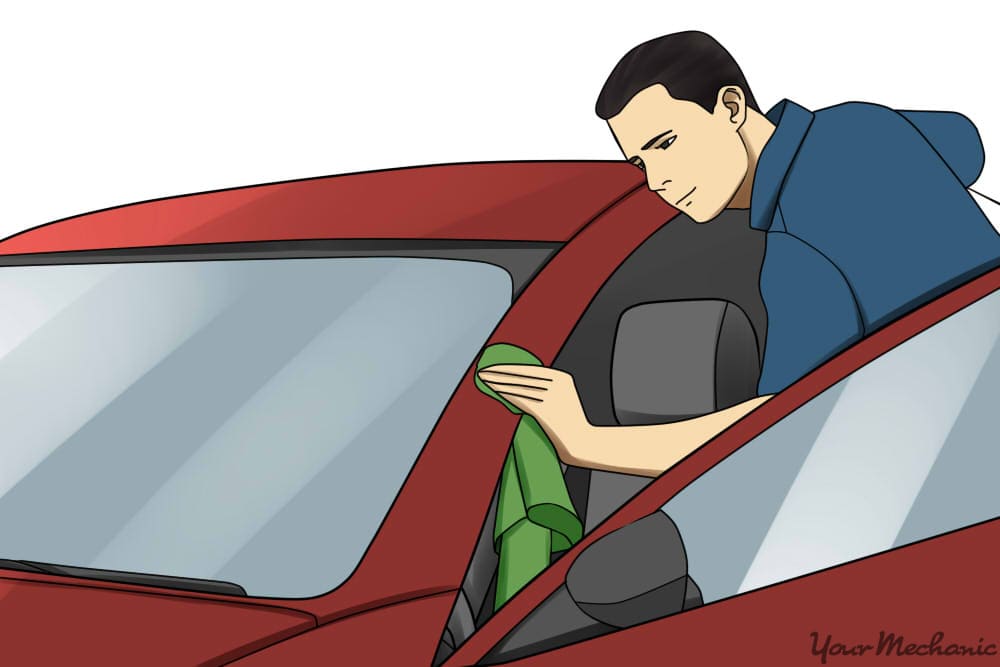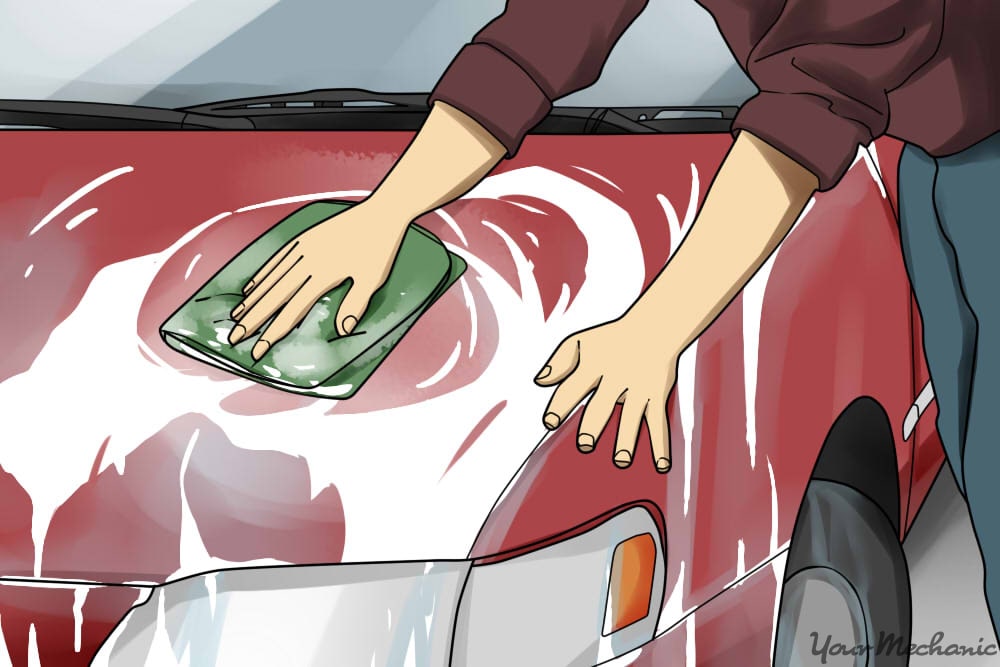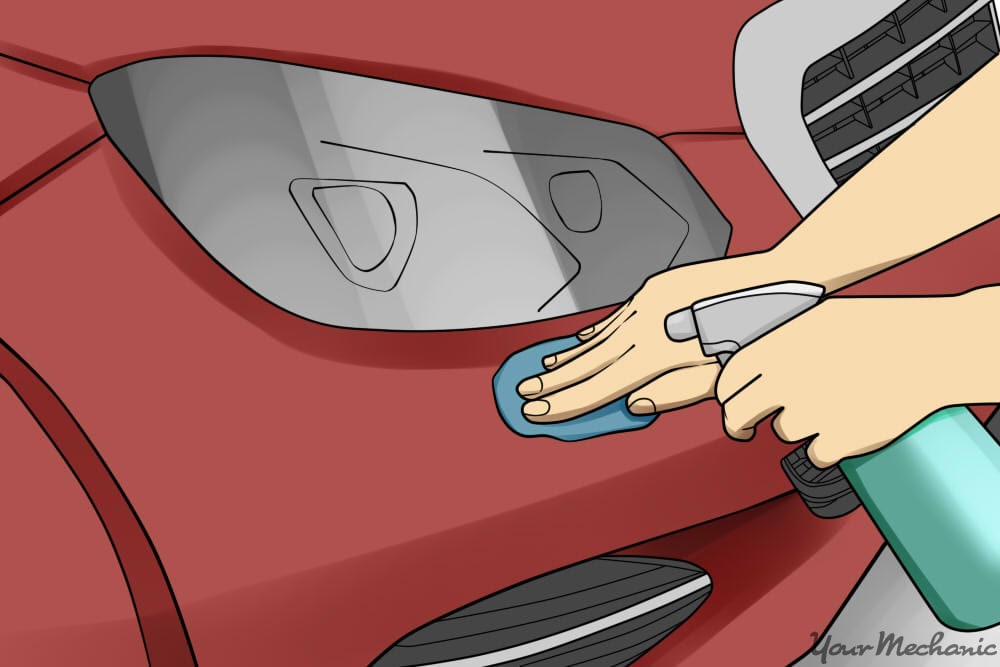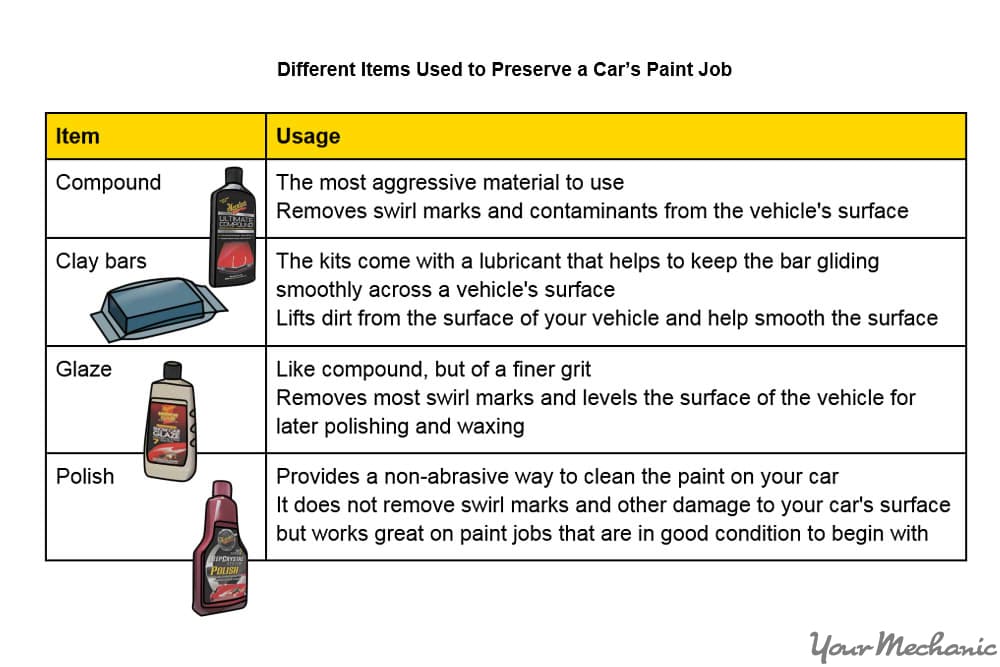

Caring for the paint job on your car is one of the best ways to keep your car looking great all year round.
Regular washing and cleaning, followed by drying, polishing, and waxing, adds a protective coating over your vehicle's paint to provide extra protection to its exterior.
Knowing when to perform each cleaning and detailing task throughout the year is important, as well, as waxing too often can dullen the finish of your car due to excess wax.
Part 1 of 4: Wash your car
Materials Needed
- Bucket
- Car wash solution
- Microfiber towel (or mitt)
- Soft-bristled brush
- Water hose
Washing a car on a regular basis helps keep it free of dirt, debris, and gritty residue that can accumulate over time. When washed on a weekly basis, your car's paint should remain relatively free of even the worst dirt caused by regular driving.
- Tip: If you are getting your car hand washed at a carwash, consider applying a prewash solution to help loosen any dirt or debris before applying the regular soap.
Step 1: Wash your car. Start washing your car from the roof of the vehicle and work your way down to the bottom of the vehicle. Use a soft-bristled brush, in small, circular motions, to remove more stubborn stains and grease. Use a microfiber cloth to clean less dirty areas.
- Warning: Avoid using normal dish soap, laundry soap, and other household cleaners when washing your car. These substances are designed to remove grease and oil, and they can damage your car's finish, not to mention strip away the vehicle's protective wax coating.
Step 2: Rinse your car. Rinse your car as you go to prevent the soap and water from drying on your car. The ideal car-washing method is to soap up and wash an area, followed by a quick rinse, before moving on. Try not to take too long while washing your car so that the water does not dry, leaving behind mineral deposits in the form of water spots.
Part 2 of 4: Dry your car
Material Needed
- Microfiber towels (or mitt)
Thoroughly drying your car after washing it keeps water spots from forming on the vehicle's surface. This helps give a vehicle a beautiful finish after you detail and wax the car later on.
Step 1: Dry your car by hand. Start drying your car as soon as you are finished with the basic wash. This keeps the water from drying and leaving water spots.
Use a microfiber towel to absorb and draw in the water and remove any remaining dirt away from the vehicle's surface. Try not to drag the towel across the car, as this can trap remaining dirt and debris underneath it and potentially scratch the paint.
- Tip: When drying your car after washing it, park in a cool, shaded area to prevent the sun from drying the car too quickly.
Step 2: Allow your car to air-dry. After drying your car to remove the majority of the moisture, allow it to air dry completely before proceeding to the detailing phase. Allow your car to sit in the shade so that the vehicle does not get too hot before you detail it.
Part 3 of 4: Detail your car
Materials Needed
- Clay bar
- Compound
- Glaze
- Microfiber towels
- Polish
After washing and drying your vehicle completely, detailing it allows you to really get a vehicle sparkling clean before waxing. Most often, basic washing does not remove smaller particles and substances that might stick to or are worked into the paint job itself. There are many detailing methods available to help further clean your car's surface.
Step 1: Choose a method to detail your car. Once your car is dry, you can detail the car's outer surface using a variety of items. The items you use depend in large part on what you are attempting to do. Different items you can use to keep your paint clean include the following:
- Warning: Before using any detailing method, make sure you understand how to use it properly. If not, it is better to pay a professional detailer to take care of your car, otherwise you run the risk of damaging your vehicle's surface.
Step 2: Prepare to detail your car. Use a microfiber towel or mitt when working with any detailing compound, glaze, or polish. The surface of the microfiber towel should help it lift dirt away from the surface. Otherwise, the dirt is just swirled around on the vehicle's surface and will probably scratch it while doing so.
- Tip: Don't forget to clean and shine your tires, which are one of the most overlooked areas of a vehicle. When doing so, clean, wash, and polish one tire at a time to prevent the cleaner from drying on the tires in patches.
Part 4 of 4: Wax your car
Materials Needed
- Car buffer (knowledgeable users only)
- Car wax
- Dual action or random orbital polisher (for the beginner)
- Microfiber towels (or mitt)
- Paint conditioner
After washing, drying, and detailing the outside of your vehicle, seal it with wax. You only need to wax your car about every three months, so this process is not required every time you wash your car.
If you use a detailing method that removes the wax, then you need to apply wax again. Optionally, you can use a paint conditioner instead of a wax product to protect your vehicle's paint job.
- Warning: Be cautious when using a buffer to wax your car. Overuse can lead to paint removal. A dual action or random orbital polisher might be the best choice for a beginner.
Step 1: Apply wax. Apply wax using a microfiber towel or a clean buffing pad using the car buffer. If using a buffer, pull the trigger gently, pulsing the wheel. This keeps the wax from caking on the surface of the car.
Step 2: Allow the wax to set. Proceed with applying the wax a section at a time, allowing the wax to set before removal. Check the wax container for directions on use and recommended wax set times.
Step 3: Buff the wax in. Take a microfiber cloth and use circular motions with the buffer to rub in the wax. Repeat this process until you have waxed the entire surface of the vehicle.
When using a buffer to wax your car, use a gentle circular motion that overlaps as you work across each section. Three to five pounds of pressure should be enough to wax your car effectively. As an alternative to waxing, consider applying a ceramic coating for a protective shine that can last years.
Keeping your vehicle's paint job cleaned, detailed, and waxed maintains its shiny look for years. This, in turn, prevents the buildup of oxidation, which eventually leads to damaging rust.
If rust does develop or your vehicle's paint becomes damaged, seek the help of an experienced auto body professional, such as one from YourMechanic, to advise you on what steps you need to take to correct the situation.






